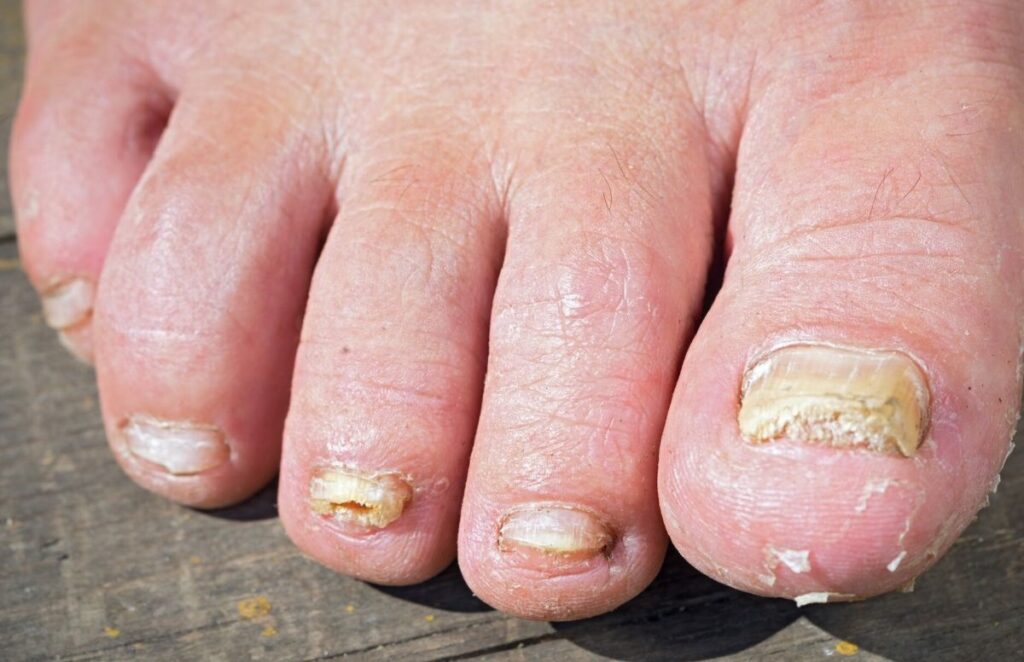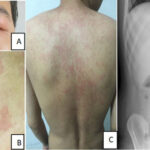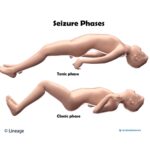Toenail onychomycosis is a common and persistent fungal infection of the nail unit, primarily caused by dermatophytes, but also by yeasts and non-dermatophyte molds. It represents approximately 50% of all nail disorders and is frequently associated with thickened, discolored, and brittle toenails. Though often regarded as cosmetic, onychomycosis can lead to discomfort, pain, and secondary bacterial infections if left untreated.

Etiology and Causative Organisms of Onychomycosis
Primary Fungal Pathogens
- Dermatophytes (most common):
- Trichophyton rubrum
- Trichophyton interdigitale
- Yeasts:
- Candida albicans
- Non-dermatophyte molds:
- Scopulariopsis brevicaulis
- Fusarium spp.
- Aspergillus spp.
Risk Factors
- Aging (prevalence increases with age)
- Diabetes mellitus
- Peripheral vascular disease
- Immunosuppression
- Tinea pedis (athlete’s foot)
- Nail trauma
- Moist environments (communal showers, swimming pools)
Types of Toenail Onychomycosis
Onychomycosis is classified based on clinical presentation and path of fungal invasion:
| Type | Description |
|---|---|
| Distal Lateral Subungual (DLSO) | Most common; begins at nail bed and spreads proximally |
| White Superficial Onychomycosis | Surface of the nail plate affected; chalky white patches |
| Proximal Subungual Onychomycosis | Entry from the proximal nail fold; more common in immunocompromised hosts |
| Endonyx Onychomycosis | Fungal invasion of nail plate without nail bed involvement |
| Total Dystrophic Onychomycosis | Complete destruction of the nail plate; advanced, end-stage infection |
Clinical Manifestations of Fungal Nail Infections
Common Signs and Symptoms
- Thickened toenails
- Yellow, brown, or white discoloration
- Subungual debris accumulation
- Brittle, crumbly nail texture
- Onycholysis (separation from nail bed)
- Foul odor
- Pain or discomfort during walking or pressure
Diagnostic Techniques for Confirming Onychomycosis
Laboratory Diagnosis Is Essential
Accurate diagnosis is vital due to similar presentations with other conditions (e.g., psoriasis, eczema, trauma).
Diagnostic Methods:
- Direct Microscopy (KOH Preparation)
- Fast, inexpensive
- Confirms fungal elements
- Fungal Culture
- Identifies species
- Takes up to 3 weeks
- Periodic Acid-Schiff (PAS) Staining
- Histologic examination of nail clippings
- High sensitivity
- Polymerase Chain Reaction (PCR)
- Rapid molecular detection
- Detects mixed infections
Treatment Options for Toenail Onychomycosis
Oral Antifungal Therapy (Systemic)
Most effective option with high mycological and clinical cure rates.
| Drug | Dose & Duration | Notes |
|---|---|---|
| Terbinafine | 250 mg daily for 12 weeks | First-line; fungicidal; hepatotoxicity risk |
| Itraconazole | 200 mg twice daily for 1 week/month (3–4 months) | Pulse therapy; fungistatic |
| Fluconazole | 150–300 mg weekly for 6–12 months | Off-label use; lower efficacy |
Topical Antifungal Therapy
Effective in mild to moderate cases and patients who cannot tolerate oral agents.
| Agent | Formulation | Application Duration |
|---|---|---|
| Ciclopirox 8% | Lacquer | Daily for up to 48 weeks |
| Efinaconazole 10% | Solution | Daily for 48 weeks |
| Tavaborole 5% | Solution | Daily for 48 weeks |
Combination Therapy
- Combining oral and topical antifungals improves cure rates in stubborn cases
- Useful in patients with extensive or thick nail involvement
Non-Pharmacologic and Adjunctive Treatments
Laser Therapy
- FDA-approved lasers such as Nd:YAG 1064 nm
- Limited clinical evidence, high cost
Mechanical or Chemical Debridement
- Reduces fungal load
- Improves topical penetration
Surgical Nail Removal
- Reserved for severe dystrophic nails
- Can be combined with antifungal treatment
Preventive Measures and Recurrence Control
Due to high relapse rates, preventive strategies are essential:
- Keep feet clean and dry
- Avoid walking barefoot in communal areas
- Use antifungal powders/sprays in shoes
- Wear breathable footwear and moisture-wicking socks
- Disinfect nail tools regularly
- Manage underlying conditions (e.g., diabetes, hyperhidrosis)
Prognosis and Long-Term Management
- Cure rates are 50–80% depending on the therapy
- Toenail growth is slow: full regrowth may take 12–18 months
- Recurrence is common; requires ongoing surveillance
Complications of Untreated Onychomycosis
If neglected, onychomycosis can lead to:
- Painful nail deformities
- Secondary bacterial infections
- Cellulitis, especially in diabetics
- Psychological and social embarrassment
Frequently Asked Questions:
What is the most effective treatment for toenail onychomycosis?
Oral terbinafine is considered the most effective treatment for moderate to severe onychomycosis, especially in dermatophyte infections.
How long does it take to cure fungal toenails?
Complete cure can take 12 to 18 months depending on treatment type and severity of infection.
Is toenail onychomycosis contagious?
Yes, it can spread through direct contact or contaminated surfaces like showers, shoes, and nail tools.
Can onychomycosis go away without treatment?
Rarely. In most cases, medical treatment is necessary to eradicate the fungus and prevent progression.
Can toenail fungus return after treatment?
Yes, recurrence rates are high. Preventive measures and follow-up treatments are often needed to maintain clear nails.
Effective Management of Toenail Onychomycosis
Toenail onychomycosis is a common yet stubborn fungal infection that can cause chronic discomfort and aesthetic concerns. With accurate diagnosis and **appropriate therapy—oral, topical, or combined—**patients can achieve significant improvement. Early intervention, patient compliance, and preventive care are key to successful long-term management and avoiding recurrence.

